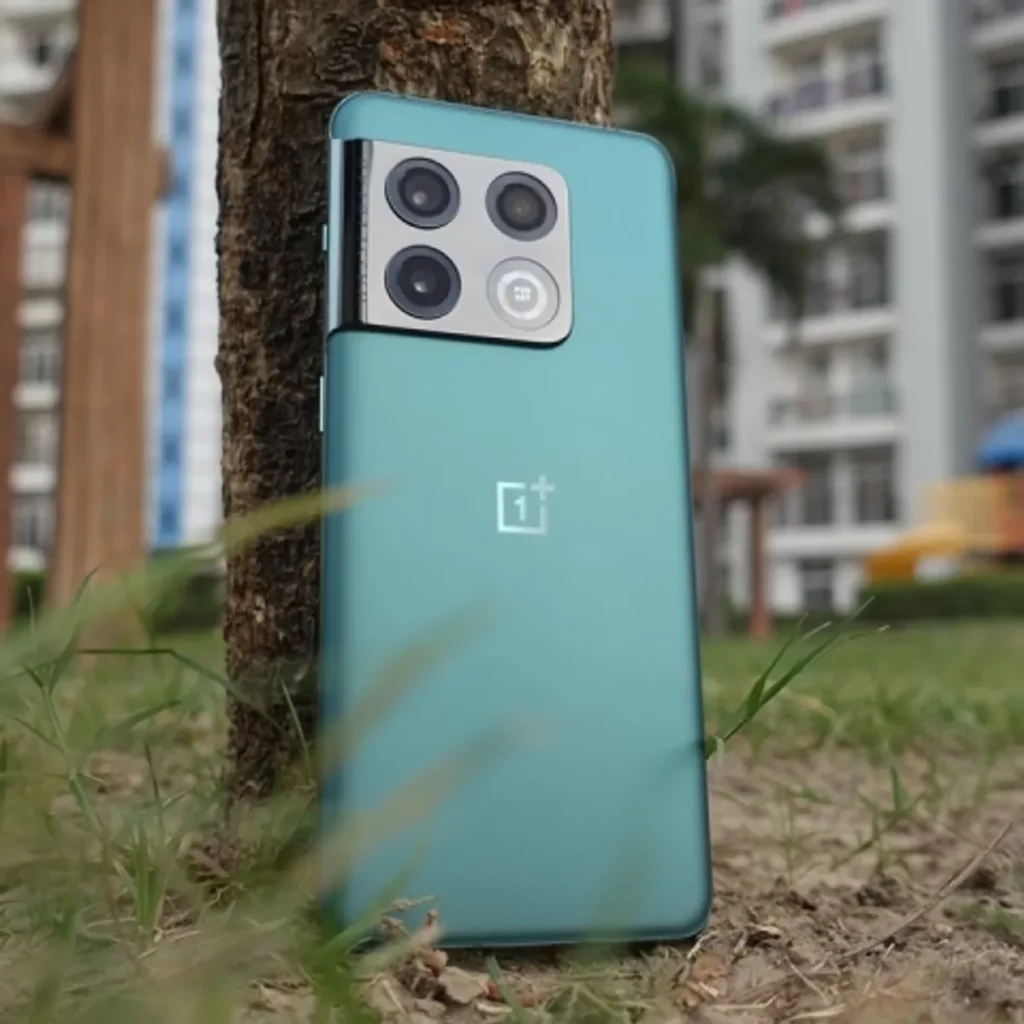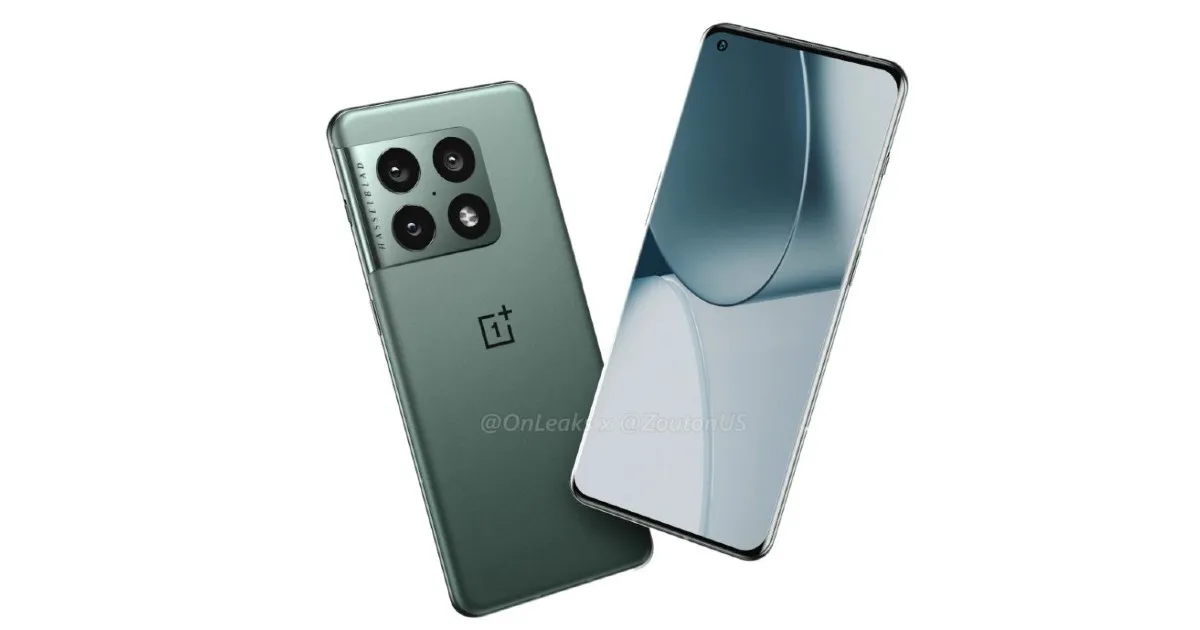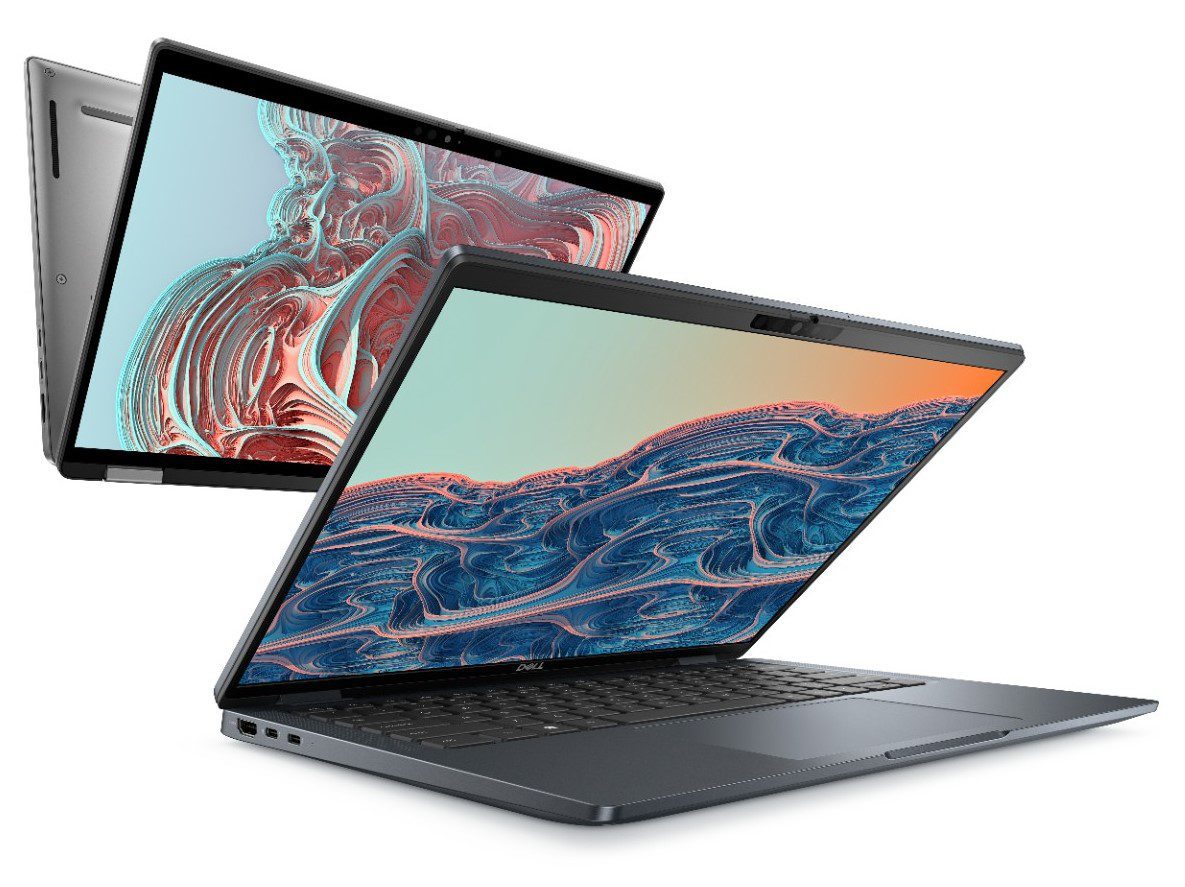OnePlus 10 Pro the past few years, OnePlus has changed dramatically in terms of its vision. Through its value-oriented offerings, the company has disrupted the flagship segment and diversified into the affordable segment in a short period. That’s not all… the brand eschews the idea of a high-end Android phone and takes it on head-on. The OnePlus 9 Pro (review) – at least according to me – was the first phone from OnePlus’ stables that provided end-users with everything but the kitchen sink for a full-featured flagship smartphone. Apart from the diversification of its phone line, OnePlus has changed its tune, too, as the handset comes pre-loaded with an Oxygen OS version based on Color OS.
It is understandable that the OnePlus 10 Pro, the company’s latest device, has a lot riding on its shoulders regarding expectations. In addition to the phone having to prove the naysayers wrong, it also has to get the attention of OnePlus loyalists for the first time in a very long time to prove its worth to them. Is the handset able to stand out in a competitive segment overshadowed by devices like the Samsung Galaxy S22 Plus (review) or the iQOO 9 Pro (review)? Let’s take a closer look at that and see what we find out.

Design
Regarding design, OnePlus knows something about making good-looking phones, and the company’s latest phone doesn’t fall short when designing gorgeous phones. The smartphone is entirely made of glass and metal, so it imparts a luxurious feel to the hand since it is fully built-in glass and metal. Even with its enormous ceramic camera module, the handset is set apart from everything else on the market in a way that can be attributed, at least in part, to its distinct style. The camera array is wrapped around the phone’s frame, reminding me of the Samsung Galaxy S21 series in terms of how it wraps around the edge. Although the similarities end there, there is no doubt that the design of the OnePlus 10 Pro is one of the most fascinating and unique in the world.
Two different colours are available for the OnePlus 10 Pro, Emerald Forest and Volcanic Black. The first time I saw the phone, I was sceptical about its green colour, but I grew to like it as time passed. In other words, the paint job is muted green and doesn’t immediately stand out from the crowd.
Please take note of the following. Further, the shade can complement the camera module’s metallic accents superbly. As a bonus, both hues come with a matte finish, which prevents smudges and stains from sneaking into the structure of the paint. Meanwhile, the smartphone does not have an IP rating, which is a letdown, especially when you plan to spend upwards of Rs 60K on it. To add insult to injury, OnePlus is also selling a “weatherproof” version of its OnePlus 10 Pro in some select markets, although the price is higher than the original. The good news is that the handset comes with Corning’s Gorilla Glass Victus on the back, so it should last a long time.
In addition to being quite comfortable to use day in and day out, I also found the OnePlus 10 Pro exceptionally lightweight. It offers a relatively narrow frame compared to other Android smartphones, such as the Samsung Galaxy S22 Ultra (review), and it has about the same size as its predecessor. Consequently, you should efficiently use the phone with just one hand and grip it comfortably. It also comes with OnePlus’ iconic alert slider, which is handy if you’re the type of person who jumps into meetings and is out of them all the time. Also, while the in-display fingerprint sensor on the OnePlus 10 Pro is not as snappy as the one on the iQOO 9 Pro, it still quickly unlocks your phone. Also, the device has a facial recognition system, which works just as well as the other features, so there is no need to complain.
If you’re like me and spend a lot of time typing on your phone, you’ll also appreciate the OnePlus 10 Pro’s haptic feedback. The company has equipped this device with a brand-new SLA X-axis linear motor that will offer meatier and tighter haptics than the original OnePlus 9 Pro. The phone’s speakers are excellent and should be sufficient for anyone who wants to consume media on the go despite the lack of a headphone jack.
Display
Several minor improvements have also been made to the display on the OnePlus 10 Pro over the one on the OnePlus 9 Pro. It should be noted that both the OnePlus 10 and OnePlus 10 Pro come with a 6.7-inch QHD+, Fluid AMOLED panel that refreshes at 120Hz, while the OnePlus 10 Pro’s screen uses second-gen LTPO technology, which means that the panel can be tuned to restore at as low as 1Hz. Conversely, with the OnePlus 9 Pro, you can only scale the display between a resolution of 10Hz and an explanation of 120Hz. Furthermore, you’ll barely notice a difference between the refresh rates since the device switches between them much faster.
While using the phone, stuttering animations or UI transitions may occur. In addition, the OnePlus 10 Pro’s screen gets audaciously bright at 1,300 nits, making it brilliant, just like last year’s device. Although Delhi’s sun is harsh, the display is rarely illegible.
I also enjoy watching movies on the panel, as watching them is a real treat. The phone, for example, will support HDR playback from OTT services like Netflix, which means you can stream your favourite TV shows and movies at the highest possible quality. A curved display mitigates accidental touch well, and a large touch area makes playing high-octane games comfortable, which is a great feature. Besides the above benefits, the device supports a dedicated Always-On Display mode, which can be customized in the settings menu’s “Personalization” tab. Besides the above benefits, the device supports a proper Always-On Display mode, which can be customized in the settings menu’s “Personalization” tab. The display options on the OnePlus 10 Pro are extensive.
Performance, Battery life and Software
The Snapdragon 8 Gen 1 mobile platform powers the OnePlus 10 Pro, which shouldn’t surprise you. The device uses fast LPDDR5 memory and UFS 3.1 storage for RAM and storage. I received an internal storage model with 256GB of RAM during my review. Buyers can choose the 8GB / 128GB model if they want to save a few thousand dollars.
Specs aside, the OnePlus 10 Pro performs well. The handset has the power to run graphically intensive games, perform well in synthetic tests, and multitask between a dozen or so apps at once – whatever the task at hand. As part of my phone review, I ran many benchmarks, which you can view in the slider attached below, showing the results of each. Intriguingly, while the phone gets warm to the touch when playing games or running resource-hungry applications, the handset’s performance remains constant, even when gaming or running resource-hungry applications. As can be seen in the smartphone’s CPU throttling test scores, the smartphone throttled its performance down to 75 per cent of its peak performance. When the CPU was throttled to its lowest settings
The scenery will remain unchanged if you play a graphics-intensive title like BGMI on the set. Besides running the game with HDR graphics and Extreme FPS (with the option to use the UHD texture pack), the phone could also keep its FPS high for over 40 minutes of gaming. In most of my gaming and benchmarking sessions, I used the high-performance mode, which can be found in the battery settings of the 10 Pro, to ensure my gaming and benchmarking sessions were as smooth as possible. The device performs slightly better when the feature is enabled. However, it would help if you contended with marginally warmer temperatures since the quality is also allowed.
In terms of its battery backup, the OnePlus 10 Pro is going to be okay with your mind when it comes to its performance. With the display resolution set to FHD+, you can happily use the phone for a full day without connecting it to an outlet. However, if you want to use it at QHD+ resolution, you’ll need to connect it to an outlet by the evening. I am glad to report that the smartphone comes with a wired charger of 80W, capable of charging the device in approximately 40 minutes. The device also supports wireless charging, which is more efficient than competing wired charging methods. The handset can wirelessly charge at 50W using the company’s proprietary Warp Wireless charger, a very nice feature.
On the other hand, the Software on the OnePlus 10 Pro is not as impressive as it could be. It is noteworthy that ColorOS heavily inspire the UI, and it feels clunkier than previous iterations of OxygenOS since the interface feels clunkier than previous iterations. No one can deny that I am not a big fan of the custom launcher for the phone, which has rather odd-looking folder icons that stand out like sore thumbs, and this is probably one of my biggest complaints when it comes to the smartphone’s custom launcher for the phone. Further, the handset’s Shelf utility gets activated every time you swipe down from the top-right corner, which can be annoying when you try to access your notifications with this utility. OnePlus could learn something or two from Samsung and how it implemented its Edge Panels because you can disable the same option under the Special Features menu.
Now, I have to give the OnePlus 10 Pro credit where it’s due. It only comes with a bit of bloatware, which is excellent. Additionally, the interface of the phone ships with a few additional features up its sleeves, so you can stylize the device with the myriad of theming options at your disposal and choose from three different dark modes, for example. The utility also allows you to download third-party icon packs from the Google Play store, and there are several valuable features included with it as well, including a built-in app and a photo vault that will help you keep your data private and secure. Having said that, if you have been lusting over a OnePlus handset for some time now, you are in luck
If you prefer a phone with a near-stock UI, the 10 Pro may disappoint you.
Cameras – OnePlus 10 Pro
At the back of the OnePlus 10 Pro, there is a triple camera stack consisting of a 48 MP Sony IMX789 sensor that works alongside a 50 MP Samsung JN1 ultrawide sensor that has a 150-degree field of view and an 8 MP telephoto sensor with 3.3x optical zoom capabilities. The device comes with a 32MP front-facing camera that can be used for selfies. Regarding the camera stack, the OnePlus 10 Pro retains most of the same components as its predecessor, the OnePlus 9 Pro.
I have already spoken about the camera prowess of the OnePlus 10 Pro in my in-depth comparison between it and the Samsung Galaxy S22 Ultra (review), so I encourage you to look at that as well. The following is a collection of my findings, which will help you get up to speed as soon as possible. Currently, the OnePlus 10 Pro takes beautiful photographs with its primary sensor, and the company has once again partnered with Hasselblad to deliver the most authentic colours possible when taking shots with the device. However, despite this, I noticed that in my testing, the primary sensor tended to favour warmer tones compared to the secondary sensor. No, I am not trying to mislead you by saying that the OnePlus 10 Pro photos are fantastic and stocked with details, but they always capture the scene well. However, You will notice that the reds and the yellows in the frame seem slightly exaggerated in this image.
Even so, the smartphone’s primary camera offers a decent dynamic range and sharp corners in photos, and Hasselblad filters can be added to images for a distinctive look. Even some Hasselblad filters are included with the camera, which you’ll find helpful. The same applies to lowlight stills, although they look a little doctored (the sky is usually rendered overtly grey, for example), nevertheless offers fine details and a low noise level. However, the OnePlus 10 Pro repeatedly introduces lens flare into the photos it takes. As I clicked still pictures during the day and at night, I noticed the issue cropped up now and then. Hopefully, with the help of an upcoming software update, the company will also be able to fix this issue.
On the other hand, the ultrawide angle sensor on the OnePlus 9 Pro is a step down from that of the Sony 50MP unit on the OnePlus 9 Pro. At the time of its launch, the OnePlus 9 Pro had the best UW sensor available then. It is so much so that the device could compete with devices like the Galaxy S21 Ultra (review) and the Mi 11 Ultra (review) and sometimes outshoot them. However, the sensor on this year’s phone produces washed-out images with little detail at the corners and centre and a low pixel density. Additionally, there are sharp images to be had from the telephoto sensor, despite its struggles with exposure metering from time to time. The 32MP selfie camera is capable of producing photos that are rich in detail, and the quality of the images is on par with that of the Galaxy S22 Ultra. As a result, the subject’s skin tone appears slightly orange, even though all beautification features have been disabled. OnePlus 10 Pro offers one of the best camera setups on the market, but it needs to catch up to its more expensive rivals regarding its camera capabilities.
Verdict – OnePlus 10 Pro
In India, the price of the OnePlus 10 Pro for the 8GB RAM variant is Rs 66,999, while the 12GB RAM version costs Rs 71,999. Despite the price difference, the phone offers many more features than Samsung’s latest device. Despite its lower price, the handset maintains an equally gorgeous display and comes with Qualcomm’s fastest SoC tucked under the hood. The smartphone also benefits from the fact that it charges quickly compared to most other phones in its price range. As a result, there is still some catching up to do in the camera department between the OnePlus 10 Pro and Samsung’s grandest. It is worth noting, however, that, unlike most premium phones, this handset does not come with an official IP rating either. Finally, Samsung’s four-year commitment to software updates is a year shorter than Apple’s three-year commitment.
The OnePlus 10 Pro is a good phone, but it’s okay. A testament to the company’s credibility is that people worldwide hold it to a very high standard. A testament to the company’s credibility is that people worldwide have it to a very high standard. It is evident that the handset checks most, if not all, of the right boxes, making it an excellent purchase.
Editor’s rating: 3.5 / 5
Pros:
· Stylish design
· Gorgeous display
· Excellent performer
· Capable main camera
Cons:
· No IP rating
· Assisting cameras is not the best
· Expensive





